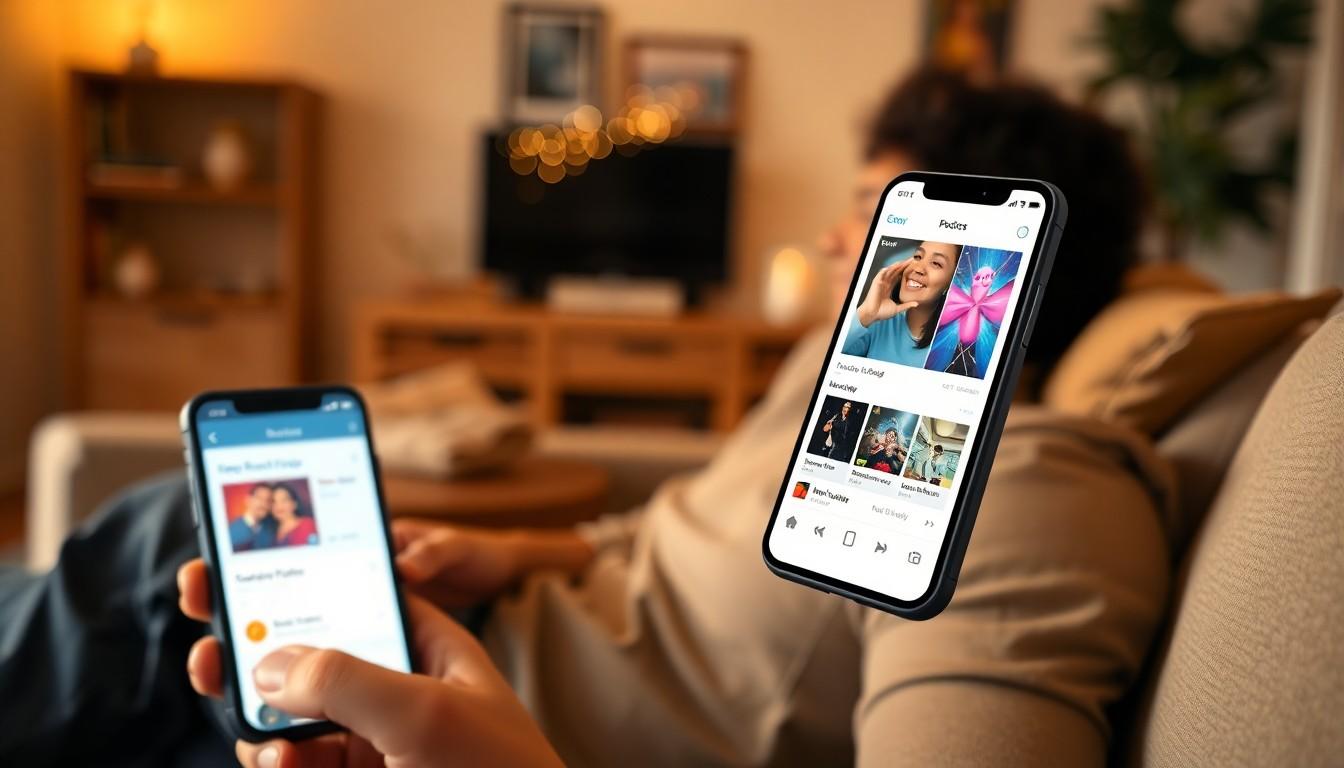In a world where silence is the enemy and playlists reign supreme, knowing how to download music to your phone is a game changer. Imagine strutting down the street, earbuds in, your favorite tunes blasting, while everyone else is stuck in awkward small talk. Who needs that? With just a few taps, anyone can turn their phone into a portable concert hall.
Understanding Music Download Options
Several options exist for downloading music to a phone. Streaming services provide an efficient way to access vast libraries of songs. Platforms like Spotify, Apple Music, and Amazon Music offer monthly subscriptions that allow offline downloads for users.
Another choice involves purchasing music from digital stores. iTunes and Google Play Music allow people to buy individual tracks or albums directly. This method often includes ownership rights, granting permanent access to downloaded content.
Free music downloads can also be explored through websites. Services such as SoundCloud and Bandcamp offer artists options to share their music for free. Users can download music directly from these platforms, supporting independent musicians.
Third-party apps enable additional downloading capabilities. Apps like DoremiZone and TuneFab provide tools for converting streaming audio into downloadable formats. These methods can save songs for offline enjoyment, although legal considerations exist.
Cloud storage options add another layer of convenience. Google Drive and Dropbox allow users to upload music files and access them from any device. This approach provides flexibility for managing a personal music library.
Consider the purpose when selecting a method for downloading music. Whether it’s access to new releases or creating a personalized collection, various pathways cater to music lovers. Explore each option to find the best fit that enhances the music listening experience.
Popular Music Downloading Apps

Downloading music through apps streamlines the process of enjoying favorite tunes. Numerous applications cater to diverse needs and preferences in music downloading.
App Features to Consider
When choosing a music downloading app, focus on user interface, audio quality, and library size. User reviews can provide insights into ease of use and functionality across different devices. Audio quality influences listening experiences; apps that support high-resolution formats stand out. A large library enables access to various genres and artists, supporting endless music exploration. Additionally, offline listening capabilities simplify enjoyment when Wi-Fi isn’t available. Integration with other services, such as social media sharing functions, also enhances user experience.
Comparing Subscription vs. Free Options
Subscription services typically offer extensive libraries, offline downloads, and exclusive content. Users often receive benefits such as ad-free listening experiences and personalized recommendations through paid options. However, free alternatives may limit access to certain features and playlists. Some free apps utilize ads to generate revenue, affecting the overall listening experience. Weighing the cost against available features helps users decide between paid subscriptions and free services. Each option presents unique advantages, so consider individual preferences and listening habits when selecting an approach.
Downloading Music from Streaming Services
Downloading music from streaming services enhances user experience by providing easy access to favorite tunes offline. Many popular platforms, such as Spotify, Apple Music, and Amazon Music, support this feature through their subscription plans.
Steps for Offline Listening
- Open the app and navigate to the desired playlist or album.
- Look for the download option, often represented by a downward arrow icon.
- Tap the icon to initiate the download process.
- Confirm that the download begins, and wait for the completion notice.
- Access downloaded music in the library section, usually marked as available offline.
Following these steps ensures that tracks are stored directly on phones, enabling users to enjoy music without internet connectivity.
Managing Storage Space
- Regularly check available storage space on the device.
- Delete unused apps and files to free up storage.
- Monitor the size of downloaded music files since they can accumulate.
- Utilize cloud services for backup when storage dwindles.
- Set download quality preferences in the app settings to manage file sizes.
These strategies help maintain optimal storage while maximizing the available space for music downloads.
Transferring Music from Computer to Phone
Transferring music from a computer to a phone is a straightforward process. This allows users to enjoy their favorite tracks on the go.
Using USB Connection
Connect the phone to the computer using a USB cable. Once connected, the phone’s storage will appear on the computer. Open the file explorer and locate the music files on the computer. Drag and drop the selected files into the music folder on the phone. After the transfer is complete, safely eject the device to prevent data corruption. This method ensures files are transferred quickly and efficiently.
Using Cloud Services
Upload music files to a cloud service such as Google Drive or Dropbox. This requires an account with the selected service. After uploading, install the corresponding app on the phone and log in. Access the uploaded music files through the app. Download the files directly to the phone for offline listening. Cloud services provide flexibility, enabling users to access their music from any device with an internet connection.
How Can i Download Music to my Phone
Downloading music to a phone opens up a world of convenience and enjoyment. With various options available from streaming services to digital stores and free platforms, users can easily curate their personal music libraries.
By understanding the features of different apps and services, individuals can find the best solutions to fit their needs. Whether it’s through subscriptions or free downloads, having access to favorite tracks anytime enhances the listening experience.
Additionally, utilizing cloud storage and simple transfer methods ensures that managing music remains hassle-free. Embracing these strategies allows for a seamless integration of music into daily life, making every moment an opportunity to enjoy the soundtrack of one’s choice.